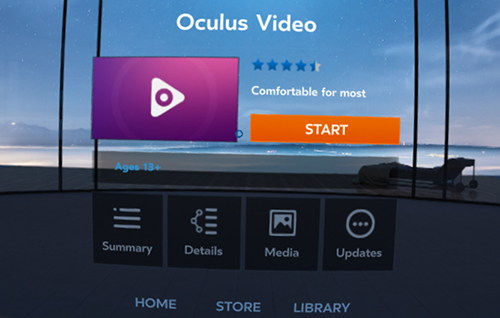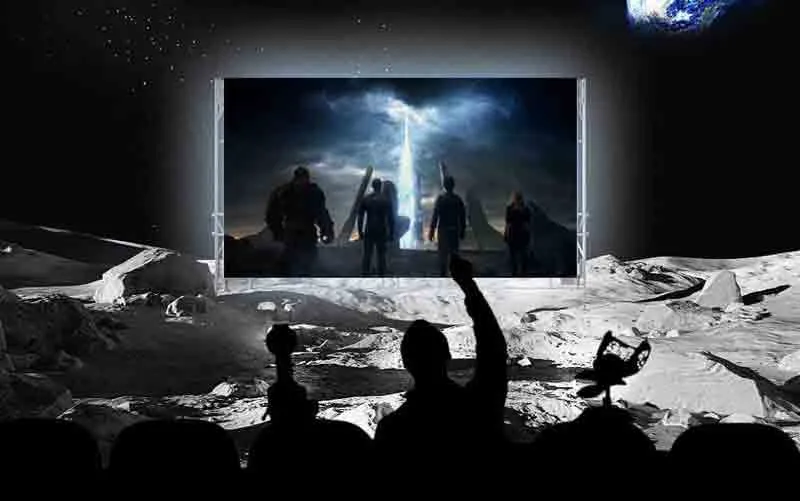This week Oculus got rid of its initial Oculus Cinema app on Gear VR that allowed headset owners to provide their own videos to watch in a virtual theater. The app was replaced with Oculus Video, offering movie purchases, rentals (coming soon) and free streaming content from services like Twitch and Vimeo, in addition to the existing functionality that allowed you to load up your own videos.

I was shocked to see the cost to buy a movie like “Dawn of the Planet of the Apes” is $30 in 3D, which is double the cost of the same movie in 2D on iTunes. I realized later there’s also a 2D version of the movie on Oculus that’s the same price as iTunes and other, older films, like the original “Die Hard” trilogy, that are more affordable. However, it would be pretty rare that I’d want to watch, or re-watch, two hours of a movie in VR in a lonely virtual theater. I decided to check out the license for Oculus Video to see if there was an indication the movies could be streamed on a traditional screen, in addition to VR, as that would at least make purchasing a movie from Oculus a little more compelling.
I found this:
At any given time, except for Virtual Living Room Viewing (described below), you may view Licensed Content on no more than one (1) authorized Oculus device using the Oculus account you used for the purchase.
“Virtual Living Room Viewing” allows you to invite no more than five (5) VLR Guests to concurrently view Licensed Content via Oculus devices. “VLR Guest” means a third party individual who has a valid Oculus Customer Account. An online connection is required to use this service.
That explains why a movie like “Dawn of the Planet of the Apes” is $30 in VR. The Oculus Video license seems to cover the ability for an Oculus user to invite five friends or family from around the world to put on an Oculus headset in their own homes and drop into a virtual living room to watch the movie with the movie’s owner. Purchasing that movie just once is less than the cost of a night out at the theater and easier than jumping in the car and driving (or flying if you are distant) to a friend’s house.
See Also: Oculus to release Social SDK, brings basic networking features to developers
The social functionality is not yet live but Oculus has yet to release its social software development tools to developers that would likely cover basic shared virtual experiences. Both the consumer Rift shipping next year and the phone powering the mobile Gear VR headset include microphones that could theoretically allow for voice chat while watching a movie and sharing a virtual space with other avatars.
We have previously heard from John Carmack and Palmer Luckey that social was in the plans for Oculus Cinema. This confirms their imminent plans to make movie-going in VR a social experience with purchased content like big budget films.
This comes at a time in the film and entertainment industry where new and disruptive business models are being considered to conform to the desires of modern society. Last winter Sony, whose hand was forced by a hacker group, experimented with the release of a film online and in theaters with The Interview. For the release weekend, the film cost $5.99 to rent and $14.99 to buy online (as opposed to the average ticket price of $8.12 per person) and it made more online than it did in the theater. Five times more.
This is obviously a bit of a special case due to the circumstances surrounding the release, but it still shows a public desire to be able to stream new releases from the comfort of their home, foregoing the traditional theater experience. In a virtual environment however, studios could potentially sell advertising placements within the theater itself – possibly offsetting or even out-pacing the difference in revenue a simultaneous online release in this format might cause. It will be interesting to see, with partnerships with studios like 20th Century Fox, if Oculus is able to convince studios to be so bold in this new platform.
Update: This post was updated to clarify that you can watch movies in Oculus Video that you’ve provided and that there is a range of prices for the Hollywood film purchases.
* It is an interesting side note that the Gear VR screenshot trick we posted does not work within the new Oculus Video app. Rather than taking a screenshot, it outputs a black image.






























